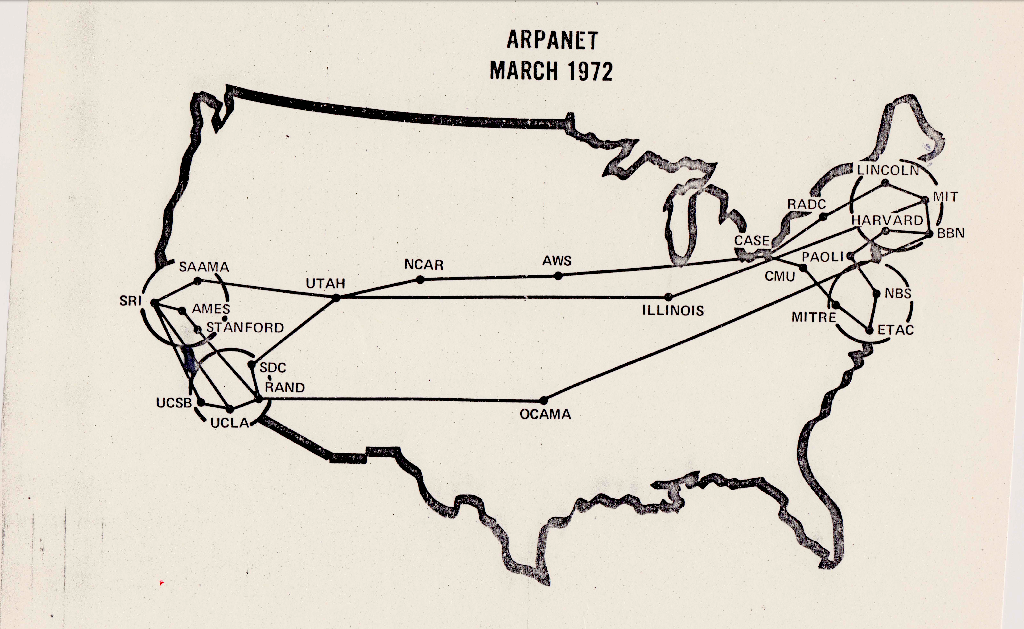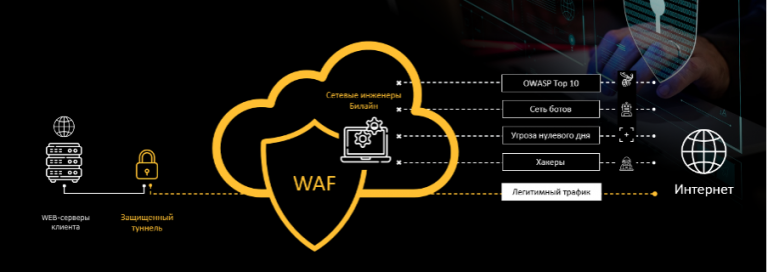How the Domain Name System Developed: The ARPANET Era

Photos – Andrew Hart – CC BY-SA
The advent of ARPANET
In 1958, the United States Government established the Advanced Research Projects Agency (ARPA). The organization’s efforts were directed to the development of technologies in the field of data storage and transmission. In the 60s, the agency received new hardware – the Q-32 computer – one of the largest computer systems with transistors weighing more than 60 tons. She immediately had two storage devices on magnetic drums, each of which read and wrote 50 bits of information. At that time, Q-32 was used to solve the tasks of the US Department of Defense.
Then the data between the computing systems was transferred using punch cards, which significantly complicated and slowed down the calculations. The military entrusted the search for a new solution to ARPA in 1968. Its engineers teamed up with colleagues at MIT and developed a packet switching protocol. With it, they “connected” the Q-32 with the university machine TX-2 (it was on it that Internet pioneer Ivan Sutherland wrote Sketchpad, the progenitor of modern CAD).
The protocol was improved throughout the first half of 1969. Specialists worked on the levels of interaction between computers on the network: hardware, software, and modem. In the second half of the year, they conducted the first technology test. The network consisted of two terminals located 600 km away at the University of California and Stanford. The terminals were Honeywell DDP-316 16-bit mini-computers with 12 kbytes of RAM. During the test, the first operator entered the word login on one machine, and the second confirmed that he saw it on the screen of another. The experiment was successful, initiating the ARPANET network.
Network Addressing Problem
The ARPANET network began to be used by universities, telecommunications companies and scientists from various fields of science. In the 80s, as many as 320 computers were connected to it. So many devices created a problem – it became difficult to work with addresses. To exchange data, each of the connected computers downloaded the HOSTS.TXT file with information about the rest of the hosts. This file existed in a single copy on a server hosted at Stanford Research Institute. It became increasingly difficult for users to work with a bloated list, given the fact that identifiers had to be manually assigned when connecting.

Photo – UCLA and BBN – CC BY-SA
The problem was especially noticeable when sending emails. To forward a message from one computer to another, the user had to specify the path for its transmission between systems. The task was complicated by the fact that individual devices could go online at different times of the day. The communication path looked like this:
utzoo! decvax! harpo! eagle! mhtsa! ihnss! ihuxp! grgThe path was a chain of hosts separated by a service symbol (!). At the end of the sequence, the name of the message recipient system was written. If the user did not know the communication path, then he could not send an email. And in 1982, a team of specialists from Network Working Group (NWG), led by Steve Crocker, who invented Request For Comments, introduced a solution – the concept of domain names (RFC805). Engineers have developed special software that automates the search for routes and allows you to address messages to any host directly. The basic principles laid down in RFC805 became the starting point for launching the familiar domain name system.
The birth of DNS
In 1983, engineers Paul Mockapetris and Jon Postel decided to extend the concept described in RFC805 to the entire ARPANET network. They prepared two new RFCs that set out the basics of DNS. RFC882 “Domain Names: Concepts and Facilities” described the capabilities of the domain name system, and RFC883 “Domain Names: Implementation and Specification” provides specification details and implementation methods.

Photos – Jordiipa – CC BY-SA / Photo: Paul Mokapetris
In particular, Mokapetris proposed a host identifier structure containing name and special category. A year later, based on the Mokapetris specification, a classification of gTLD (generic Top-Level Domains) was born, which included the domains .com, .edu, .net, .org, .int, .gov and .mil.
At first they were managed by Network Solutions Inc., which the US government hired for this purpose. Later, the reins passed into the hands of specially created non-profit organization ICANN. In 1985, after the introduction of DNS in ARPANET, six organizations registered their domains at once. The very first of them – Symbolics.com – still exists. Today it is a digital museum of the history of the Internet.
Since 1985, the domain name system has undergone many changes. For example, they added support for NOTIFY and IXFR mechanisms, which simplified the process of replicating DNS databases between different servers. More about these and other modifications, we we will tell in the next part of the material. We will also talk about the first DNS servers, in particular, the BIND project, which is still the most popular solution in this area.
![]() We at 1cloud.ru offer a DNS hosting service. Registered users get it for free.
We at 1cloud.ru offer a DNS hosting service. Registered users get it for free.
![]() We have prepared a short guide to work with the service. We tell you how to manage resource records using our control panel or API.
We have prepared a short guide to work with the service. We tell you how to manage resource records using our control panel or API.





